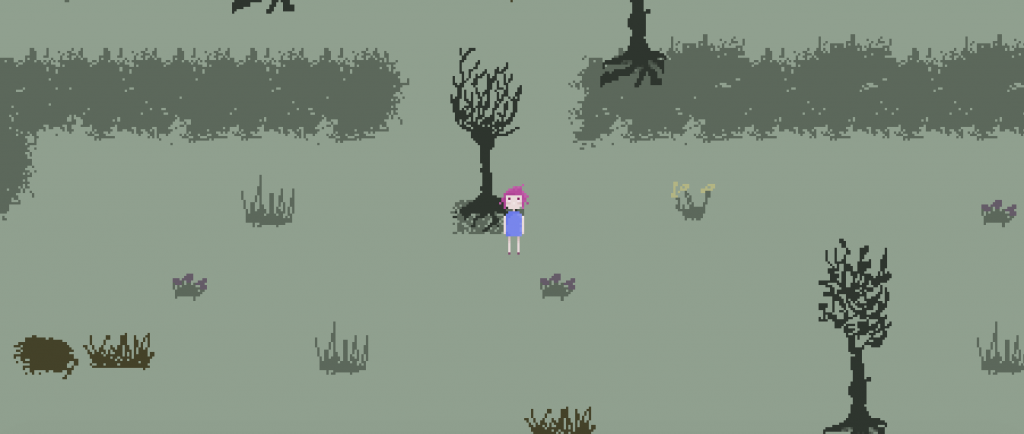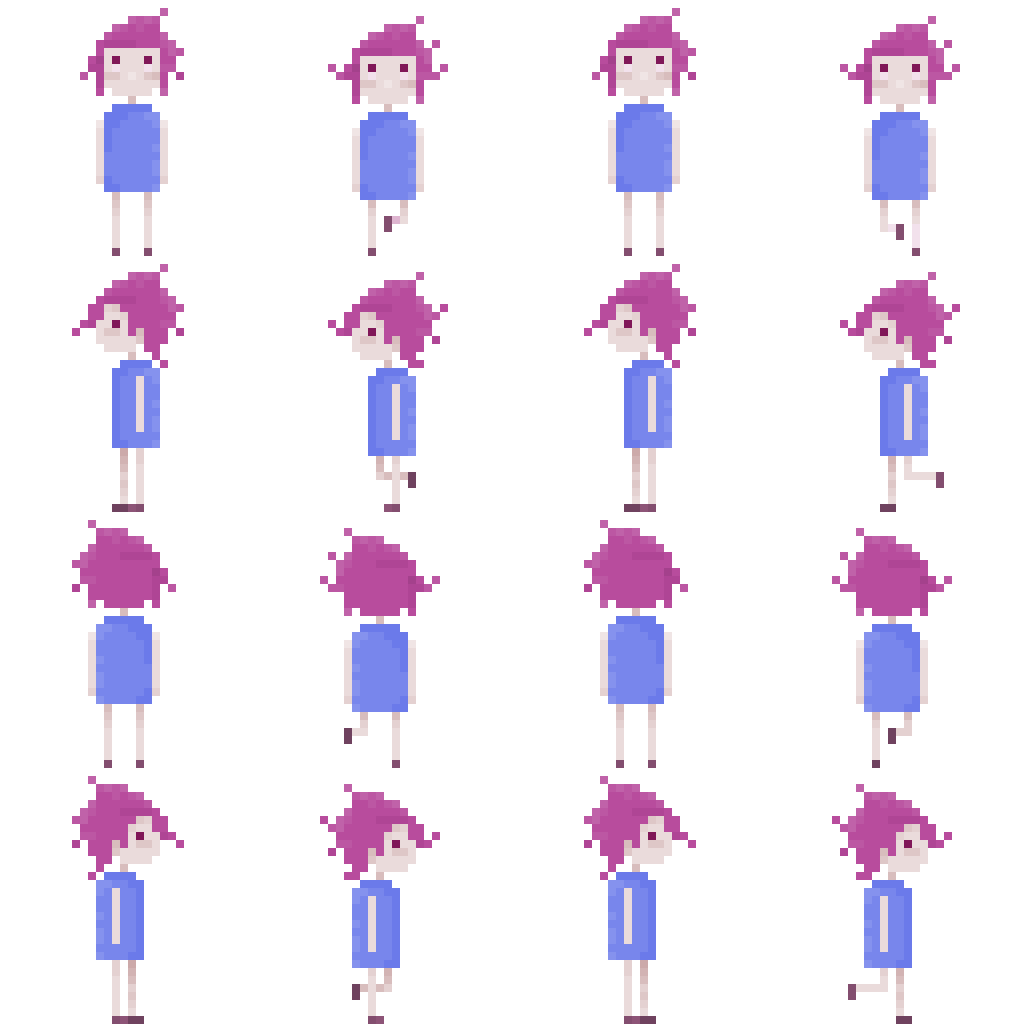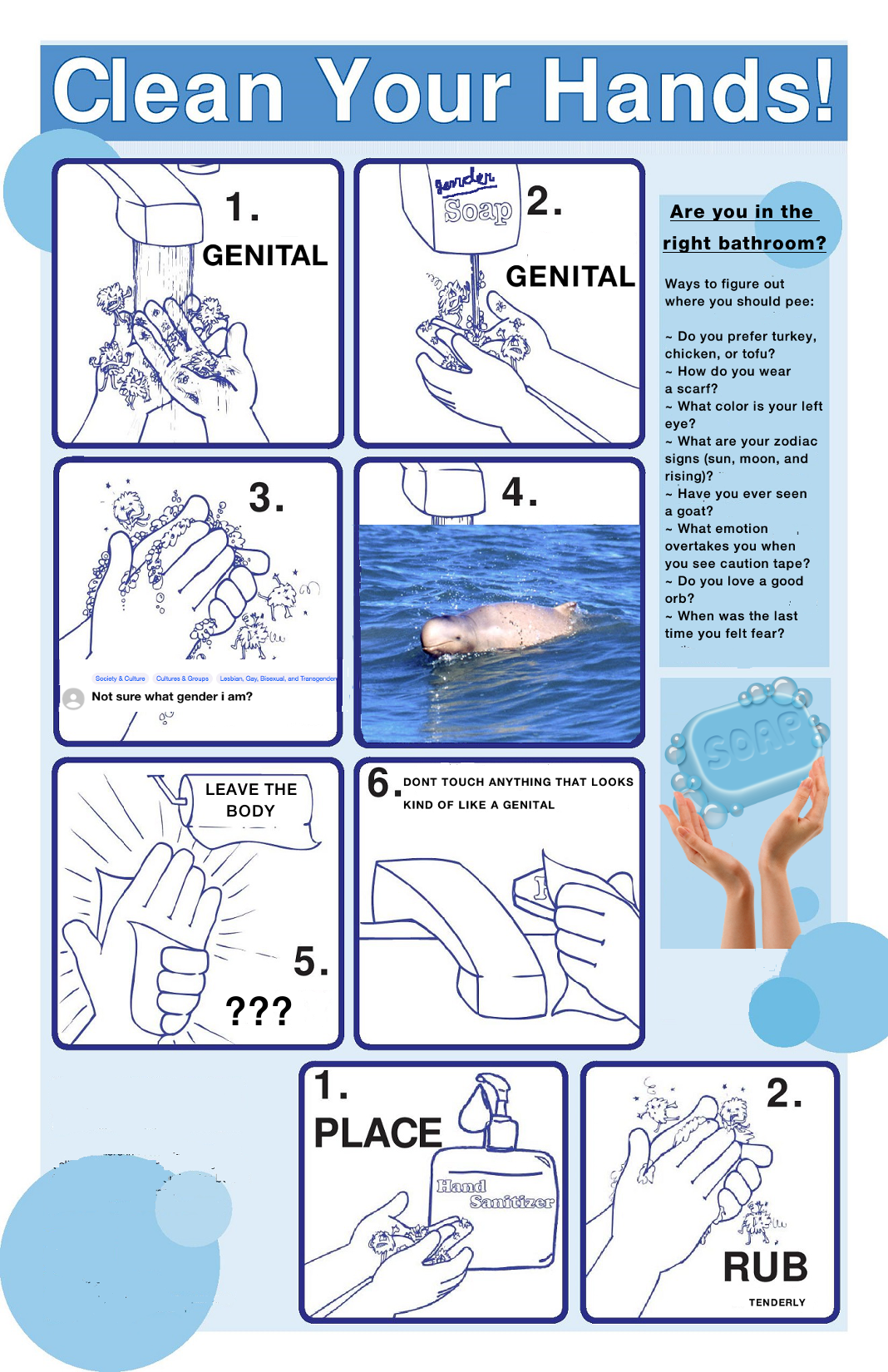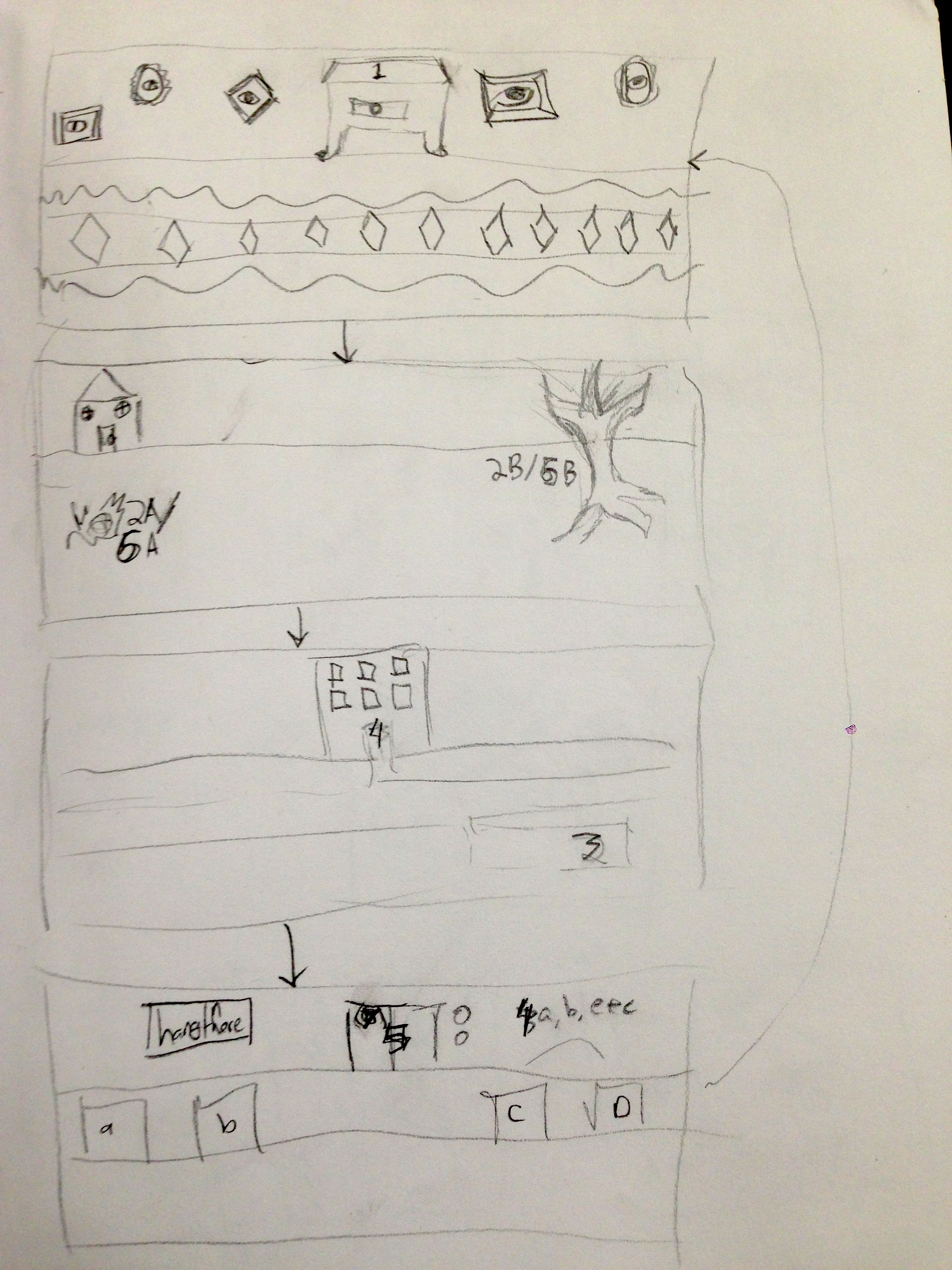My focus throughout most if not all of my dev cycle has been on art, not code, and that definitely shows at the place that I’m in with my game right now. Most of my maps are on a second or third draft, and I spent a great deal of time solely on color in certain parts of my game. After our second state-of-game in class, I was able to push past a lot of difficulty I’d been having with the second map – the green outdoor map. I made the map larger and populated it with more plants and trees – thus making it feel more alive, more a part of the world, and less closed-in and out of place.
I’ve had consistent encouragement throughout the dev cycle that my art is successful in conveying what I want it to convey without words – sometimes the first or second draft of a map or character won’t be quite right, but usually by the second or third draft players can pick up a lot about the world with little explanation.
Going into state-of-game, I was feeling very unsure about my choice to omit text in my game, concerned that players wouldn’t fully be able to read the art the same way they could read a description of it. There were definitely some critiques that I was able to take into account and make changes with (specifically in the second map, which I mentioned above, but also some notes about scale and trees) but I was surprised to find that my art got across a lot more about the story and characters than I expected it to. After state-of-game I put a lot of work into reworking the trees in my maps and the pathways and color schemes in a couple of them.
I also spent a great deal of time to make the through-line of my maps very intuitive, something that I’m still working with. I want most of the conflict of the game to come from external forces and not from the player, so it was important for me that the world of the game be very immersive and steer the player away from seeking conflict. I feel I’ve somewhat accomplished this through the design of my player character. Almost everyone who’s playtested or looked at the game has felt endeared to Mila and has not gotten a sense of combat or fighting being necessary from the world.Players have expressed a feeling that conflicts in the world could be solved through conversation or compassion.
Although there is often conflict surrounding Mila, I want most of the choice in the game to come from their decisions in characterizing her (in the conversation with the doberman, for instance) and from how they treat the other characters in the game (the vulture and mole, in addition to Mila’s father).
I’ve also been playing a lot of game jam or lab games, usually made by one or two people, to get a sense of what other people are making working within the same scale or timeframe as I am. This has been immensely helpful in setting reasonable goals for myself and keeping me engaged in working on my own game.




